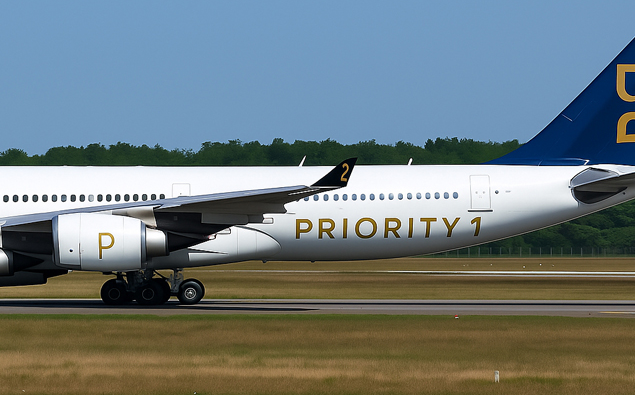
The aviation industry is undergoing a transformative shift, and with changing market dynamics, retired passenger aircraft are finding new life in the cargo sector. Among these, the Airbus A340-600 has emerged as a particularly promising candidate for freighter conversion. Once a long-haul passenger jet, this aircraft is now gaining renewed interest from logistics providers and freight operators eager to tap into its underutilized potential.
🛫 A Glimpse Into the A340-600’s Legacy
The Airbus A340-600, once the crown jewel of long-range air travel, was designed for intercontinental flights with high passenger volumes. With a length of nearly 76.4 meters (250 feet), it’s the longest Airbus aircraft ever built. Boasting a four-engine layout and a range of around 14,450 km (7,800 nautical miles), it was optimized for endurance, redundancy, and payload capacity.
But with the rise of more fuel-efficient twinjets like the Boeing 777 and Airbus A350, the A340 was gradually retired from passenger service. However, this aircraft’s robust structure and voluminous fuselage make it a hidden gem for the cargo market.
📦 Why the A340-600 Is Ideal for Cargo Conversion
1️⃣ Exceptional Cargo Volume
The A340-600’s stretched fuselage allows for a very large internal cargo space—even more so than some aircraft traditionally used for freight. While its payload in weight may not match that of a Boeing 747F, its volume capacity is a major asset, making it ideal for lighter, voluminous cargo such as e-commerce packages, medical supplies, or automotive components.
2️⃣ Abundant Supply and Cost-Effectiveness
Dozens of A340-600s have been retired in recent years and are available at attractive prices. Their low acquisition cost makes the economics of conversion far more viable compared to purchasing a new-build freighter. For carriers looking to expand capacity without investing in expensive new jets, this aircraft is a cost-effective entry point.
3️⃣ Sturdy and Proven Design
The A340-600’s quad-engine setup and overbuilt landing gear—originally designed to handle the heavy loads of full passenger service—are a benefit in the cargo world. The aircraft can handle high cycle operations and land on a variety of runways, a plus for global freight routes with varied infrastructure.
4️⃣ Long-Range Capabilities
Thanks to its impressive range, the A340-600 can serve long-haul cargo missions without the need for frequent refuelling stops. This makes it well-suited for intercontinental routes between global cargo hubs, increasing efficiency and lowering operational costs per ton-kilometre.
🌍 Sustainability and Circular Aviation
Repurposing retired A340-600s is also aligned with sustainability efforts. Rather than scrapping or storing these massive airframes, conversion programs extend their life cycles, reduce waste, and support the circular economy. Many airlines and operators are keen to offset carbon costs by investing in lower-cost aircraft that don’t require intensive manufacturing.
📈 A Growing Opportunity for the Cargo Market
With global air cargo demand projected to grow steadily due to e-commerce, pharmaceuticals, and just-in-time logistics, the converted A340-600 is carving out a place for itself. Logistics companies need flexible, scalable solutions—and this aircraft checks the right boxes.
🧭 In Summary
The Airbus A340-600, once overshadowed by newer jets, is now enjoying a renaissance in the cargo space. With its massive internal volume, long range, and availability at bargain prices, it’s a powerful freighter platform in the making. As demand for global cargo rises, the skies might once again be filled with these majestic giants—only this time, carrying commerce instead of passengers.

